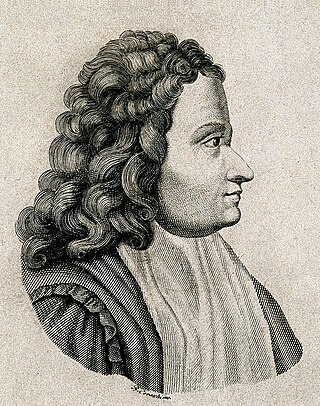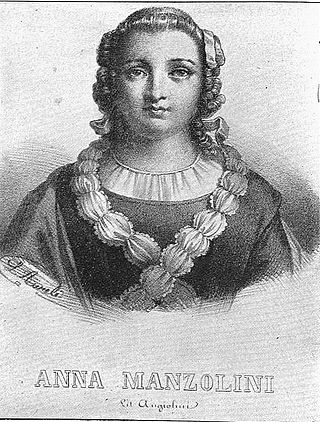The year 1774 in science and technology involved some significant events.
The year 1714 in science and technology involved some significant events.

Moulage is the art of applying mock injuries for the purpose of training emergency response teams and other medical and military personnel. Moulage may be as simple as applying pre-made rubber or latex "wounds" to a healthy "patient's" limbs, chest, head, etc., or as complex as using makeup and theatre techniques to provide elements of realism to the training simulation. The practice dates to at least the Renaissance, when wax figures were used for this purpose.

Antonio Maria Valsalva, was an Italian anatomist born in Imola. His research focused on the anatomy of the ears. He coined the term Eustachian tube and he described the aortic sinuses of Valsalva in his writings, published posthumously in 1740. His name is associated with the Valsalva antrum of the ear and the Valsalva maneuver, which is used as a test of circulatory function. Anatomical structures bearing his name are Valsalva’s muscle and taeniae Valsalvae. He observed that when weakness of one side of the body is caused by a lesion in the brain, the culprit lesion tends to be on the side opposite (contralateral) to the weak side; this finding is named the "Valsalva doctrine" in his honor.

Alessandro Achillini was an Italian philosopher and physician. He is known for the anatomic studies that he was able to publish, made possible by a 13th-century edict putatively by Emperor Frederick II allowing for dissection of human cadavers, and which previously had stimulated the anatomist Mondino de Luzzi at Bologna.

A wax sculpture is a depiction made using a waxy substance. Often these are effigies, usually of a notable individual, but there are also death masks and scenes with many figures, mostly in relief.

Dorotea Bocchi (1360–1436) was an Italian noblewoman known for studying medicine and philosophy. Dorotea was associated with the University of Bologna, though there are differing beliefs regarding the extent of her participation at the university ranging, from whether she taught or held a position there. Despite these debates, there is consensus that she flourished and was active at the university for more than 40 years, beginning from 1390 onwards.

Giuseppe Pedretti was an Italian painter of the late-Baroque or Rococo period, active mainly in Bologna.

Ercole Lelli was an Italian painter and sculptor of the late-Baroque, active mainly in Northern Italy, including his native city of Bologna, as well as Padua and Piacenza. He became noted for his anatomical sculpture and art.

Anna Morandi Manzolini was an Italian anatomist, anatomical wax modeler, and lecturer of anatomical design at the University of Bologna. She became internationally known for the production of anatomical wax models based on anatomical dissections.

Paolo Mascagni was an Italian physician and anatomist. He is most well known for publishing the first complete description of the lymphatic system.

San Procolo is an early Gothic-style, Roman Catholic church and former monastery-hospital located on Via Massimo D'Azeglio #52 in central Bologna, region of Emilia Romagna, Italy.
Marie Marguerite Bihéron was a French anatomist, known for her medical illustrations and wax figure models.

Clemente Michelangelo Susini (1754–1814) was an Italian sculptor who became renowned for his wax anatomical models, vividly and accurately depicting partly dissected corpses. These models were praised by both doctors and artists.

Francesco Antonio Boi was a Sardinian physician and professor of anatomy. He is known for his work with the sculptor Clemente Susini in preparing highly detailed and accurate wax anatomical models.

The Palazzo Poggi is a palazzo in Via Zamboni 33, Bologna, Italy. It is the headquarters of the University of Bologna and of the rector of the university.
Giovanni Antonio Galli (1708–1782) was a physician who pioneered the teaching of obstetrics in Bologna using three-dimensional models.
Luigi Castaldi was an Italian anatomist and physician. He demonstrated endocrine function on development and growth. He also wrote on the history of anatomy.













